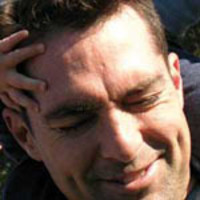Papers by Steven J Orfield

HFES JOURNAL, 2004
This study addresses the goal of an integrative approach to evaluating the effects on work of env... more This study addresses the goal of an integrative approach to evaluating the effects on work of environmental design. Results are based on pre-occupancy evaluations of 2 different office workplaces, with many parallels in occupancy design. Methods entailed: (1) measurement of noise, lighting, and thermal conditions at selected work stations; and (2) administration of an occupancy quality perceptual response survey questionnaire. A 2-step, least-squares (2SLS) multiple regression method was used for sources of variance analysis of responses to occupancy quality items on the questionnaire. The major result is that observed variance in major indicators of occupancy quality is not explained by responses to the same questionnaire items for the 2 sites. The findings support the conclusion that, across different occupancy design settings, observed variability in work behavior is not likely attributable to a universal set of design factors.
Provider Magazine, 2023
Design for Therapeutic Gardens is a long term practice. Yet few designers in this field have stud... more Design for Therapeutic Gardens is a long term practice. Yet few designers in this field have studied how those with disabilities actually experience gardens intended for their benefit. This article is about the first effort to translate the sensory disabilities of the elderly to the design of a garden that actually scales to their sensory performance based on the science of dementia and the science of human perception.
St. Paul Pioneer Press
Orfield Laboratories researches how consumer products make people feel. Steve Orfield calls it "t... more Orfield Laboratories researches how consumer products make people feel. Steve Orfield calls it "the first multi-sensory design and research company in the world." He has turned his sensory approach to designing spaces for autistic children, who can be traumatized by stimuli that seem harmless to others. Architects, he said, don't focus on how a building's users will feel.
Sound & Communication, 1992
As a part of founding the Sound Quality Working Group, this series of articles on psychological a... more As a part of founding the Sound Quality Working Group, this series of articles on psychological acoustic design, research and testing were completed in the 1990's and used extensively by the Fortune 1000 to move into the SQ field. Part Five was focused on correlating quantitative subjective data with measurement data.
Sound & Communication, 1992
As a part of founding the Sound Quality Working Group, this series of articles on psychological a... more As a part of founding the Sound Quality Working Group, this series of articles on psychological acoustic design, research and testing were completed in the 1990's and used extensively by the Fortune 1000 to move into the SQ field. Part Six was focused on the market research studies into the associative response to product sound.
Sound & Communication, 1992
As a part of founding the Sound Quality Working Group, this series of articles on psychological a... more As a part of founding the Sound Quality Working Group, this series of articles on psychological acoustic design, research and testing were completed in the 1990's and used extensively by the Fortune 1000 to move into the SQ field. Part Three was focused on finding the source of noise identified in a Sound Quality study for accent or attenuation.
Sound & Communication, 1992
As a part of founding the Sound Quality Working Group, this series of articles on psychological a... more As a part of founding the Sound Quality Working Group, this series of articles on psychological acoustic design, research and testing were completed in the 1990's and used extensively by the Fortune 1000 to move into the SQ field. Part Five was focused on presentation and recording systems used to perform the SQ study.
Sound & Communication, 1992
As a part of founding the Sound Quality Working Group, this series of articles on psychological a... more As a part of founding the Sound Quality Working Group, this series of articles on psychological acoustic design, research and testing were completed in the 1990's and used extensively by the Fortune 1000 to move into the SQ field. Part One was focused on the introduction of the Sound Quality concept to the reader
Sound & Communication, 1992
As a part of founding the Sound Quality Working Group, this series of articles on psychological a... more As a part of founding the Sound Quality Working Group, this series of articles on psychological acoustic design, research and testing were completed in the 1990's and used extensively by the Fortune 1000 to move into the SQ field. Part Four was focused on the motivation and application of sound quality research
Planning For Higher Education, Apr 1, 2011

PsycEXTRA Dataset, 2007
This paper describes use of a perceptual response survey instrument to assess the degree to which... more This paper describes use of a perceptual response survey instrument to assess the degree to which rankings by office workers of different key attributes of occupancy quality predict worker perceptions of their on-the-job productivity. Data were collected from a total of 434 workers employed in 10 different office sites. Results show that perceived levels of productivity are significantly correlated with rankings of perceived overall physical work environment and job quality. The correlation between perceived levels of productivity and perceived overall organization quality is marginally significant. No significant correlations are observed between perceived levels of productivity with rankings of perceived overall compensation, work station, and employment quality. The results should benefit employer decision-making regarding human factors/ergonomic (HF/E) interventions to improve office worker productivity.










Uploads
Papers by Steven J Orfield